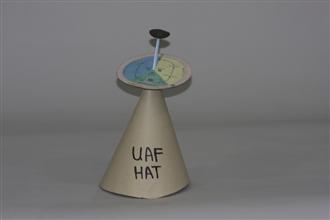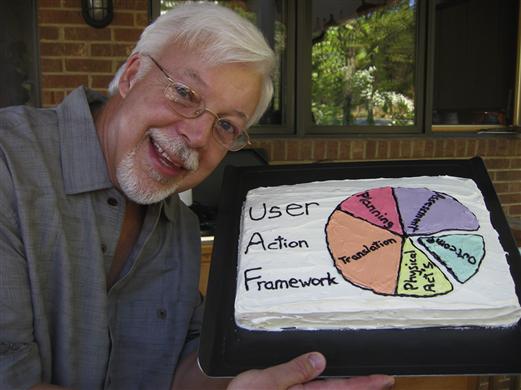Acknowledgments
I (RH) must begin with a note of gratitude to my wife, Rieky Keeris, who provided me with a happy environment and encouragement while writing this book. While not trained in user experience, she playfully engages a well-honed natural sense of design and usability with respect to such artifacts as elevators, kitchens, doors, airplanes, entertainment controls, and road signs that we encounter in our travels over the world. You might find me in a lot of different places but, if you want to find my heart, you have to look for wherever Rieky is.
I (PP) owe a debt of gratitude to my parents and my brother for all their love and encouragement. They put up with my long periods of absence from family events and visits as I worked on this book. I must also thank my brother, Hari, for being my best friend and a constant source of support as I worked on this book.
We are happy to express our appreciation to Debby Hix, for a careeer-long span of collegial interaction. We also acknowledge several other individuals with whom we’ve had a long-term professional association and friendship at Virginia Tech, including Roger Ehrich, Bob and Bev Williges, Tonya Smith-Jackson, and Woodrow Winchester. Similarly we are grateful for our collaboration and friendship with these other people who are or were associated with the Department of Computer Science: Ed Fox, John Kelso, Sean Arthur, Mary Beth Rosson, and Joe Gabbard. We are also grateful to Deborah Tatar and Steve Harrison of the Center for Human-Computer Interaction at Virginia Tech for steering us to consider more seriously the design thinking paradigm of HCI.
We are indebted to Brad Myers of Carnegie Mellon University for the use of ideas, words, examples, and figures in the contextual inquiry and modeling chapters. Brad was instrumental in the evolution of the material in this book through his patient adoption of and detailed feedback from early and incomplete trial versions.
In addition, we wish to thank Janet Davis of Grinnell College for her adoption of an early draft of this book and for her detailed and insightful feedback.
Thanks also to Jon Meads of Usability Architects, Inc. for help with ideas for the chapter on agile UX methods and to John Zimmerman of CMU for suggesting alternative graphical representations of some of the models. Additionally, one paragraph of Chapter 4 was approved by Fred Pelton.
Susan Wyche helped with discussions and introduced us to Akshay Sharma, in the Virginia Tech Department of Industrial Design. Very special thanks to Akshay for giving us personal access to the operations of the Department of Industrial Design and to his approach to teaching ideation and sketching. Akshay also gave us access to photograph the ideation studio and working environment there, including students at work and the sketches and prototypes they produced. And finally our thanks for the many photographs and sketches provided by Akshay to include as figures in design chapters.
It is with pleasure we acknowledge the positive influence of Jim Foley, Dennis Wixon, and Ben Shneiderman, with whom friendship goes back decades and transcends professional relationships.
We thank Whitney Quesenbery for discussions of key ideas and encouragement to keep writing. Thanks also to George Casaday for many discussions over a long-term friendship. We would like to acknowledge Elizabeth Buie for a long and fruitful working relationship and for helpful discussions about various topics in the book. And we must mention Bill Buxton, a friend and colleague who was a major influence on the material about sketching and ideation.
We are grateful for the diligence and professionalism of the many, many reviewers over the writing lifecycle, for amazingly valuable suggestions that have helped make the book much better than what it started out to be. Especially to Teri O’Connell and Deborah J. Mayhew for going well beyond the call of duty in detailed manuscript reviews.
We wish to thank the Department of Computer Science at Virginia Tech for all the support and encouragement.
Among those former students especially appreciated for volunteering untold hours of fruitful discussions are Terence Andre, Steve Belz, and Faith McCreary. I (RH) enjoyed my time working with you three and I appreciate what you contributed to our discussions, studies, and insights.
Susan Keenan, one of my (RH) first Ph.D. students in HCI, was the one who started the User Action Framework (UAF) work. Jose (Charlie) Castillo and Linda van Rens are two special friends and former research collaborators.
We wish to thank all the HCI students, including Jon Howarth and Miranda Capra, we have had the pleasure of working with over the years. Our discussions about research and practice with Jon and Miranda have contributed considerably to this book. We extend our appreciation to Tejinder Judge for her extensive help with studies exploring contextual inquiry and contextual analysis.
We also acknowledge all the students in classes where early drafts of this book were tested for their feedback and suggestions.
We also wish to acknowledge Mara Guimarães da Silva for very dedicated, generous, and conscientious help in gathering and formatting the references in this book.
Special thanks to Colin David Campbell of Bloomberg L.P. for the design of the book cover and many diagrams in the book.
Thanks to Mathilde Bekker and Wolmet Barendregt for discussions during my (RH) visits to Technische Universiteit Eindhoven (TU/e) in the Netherlands.
Many thanks to Phil Gray and all the other nice people in the Department of Computing Science at the University of Glasgow for hosting my (RH) wonderful sabbatical in 1989. Special thanks to Steve Draper, Department of Psychology, University of Glasgow, for providing a comfortable and congenial place to live while I was there in 1989. And thanks to Dan Olson for good memories of doing contextual studies on the Isle of Mull.
And thanks to Jeri Baker, the director of the ONE Spirit organization (www.nativeprogress.org), who has put up with my (RH) absence from my post in helping her with that organization while working on this book.
It is not possible to name everyone who has contributed to or influenced our work, professionally or personally, and it is risky to try. We have interacted with a lot of people over the years whose inputs have benefitted us in the writing. If you feel that we have missed an acknowledgement to you, we apologize; please know that we appreciate you nonetheless. Our thanks go out to you anonymous contributors.
Finally, we thank the students for the fun we have had with them at Usability Day parties and at dinners and picnics at Hartveld. In particular, we thank Terence Andre for creating the UAF hat, used at many meetings, and Miranda Capra for baking a UAF cake for one of our famous Fourth of July parties.


Finally, we are grateful for all the support from André Cuello, Dave Bevans, Steve Elliot, and all the others at Morgan Kauffman. It has been a pleasure to work with this organization.
